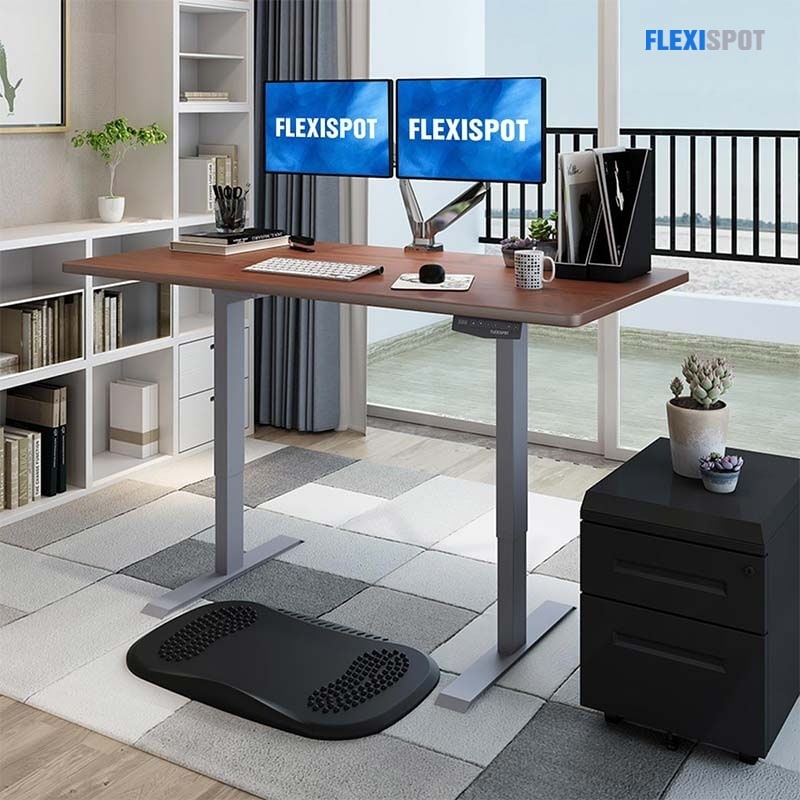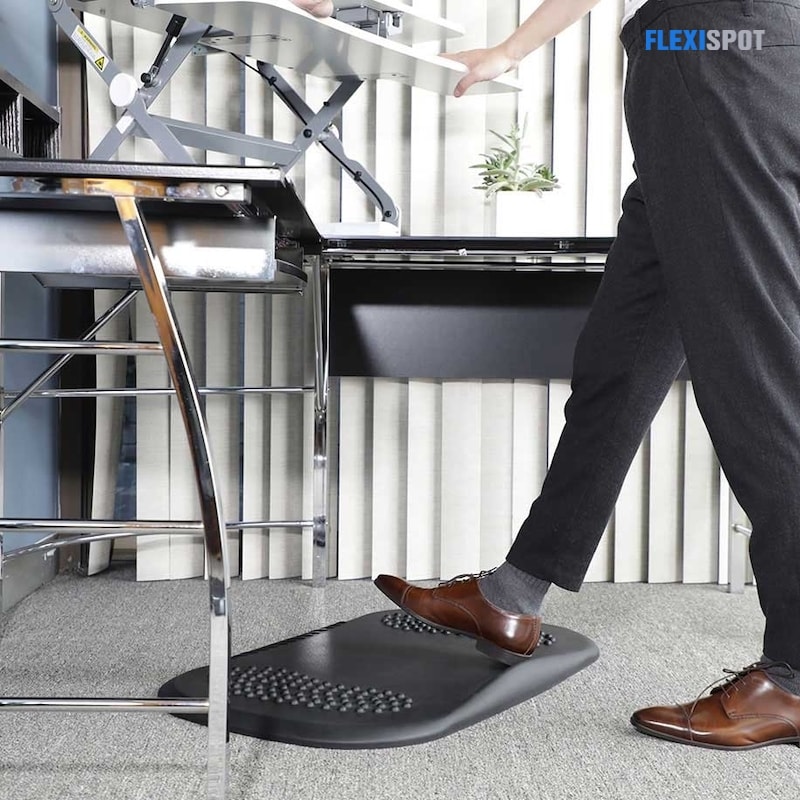Preference for standing desks is rapidly increasing as workplace wellness rises to the top of the priority list. According to a market research estimate, the worldwide standing desk industry is predicted to reach $2.8 billion by 2025, with a double-digit growth rate over the same period.
Employee well-being and motivation and the increased productivity that a healthier, happier team may provide all play a significant role.
Companies are seeing the substantial benefits of concentrating on worker health and well-being. For wellness and practical reasons, office equipment that encourages movement, particularly workstations with height flexibility, is becoming extremely prevalent.
According to research, sedentary lifestyles have been related to significant ailments such as heart disease, cancer, and type 2 diabetes.
Any form of static posture held for an extended amount of time is damaging to the body, exerting strain on the muscles and tendons and, as a result, limiting blood circulation and inflicting injury. Sitting in the same position for extended amounts of time can produce lingering pains and possibly lead to diseases like neck and back problems or carpal tunnel syndrome. Alternating between sitting and standing might be a great strategy; nonetheless, it is critical to utilize a standing desk properly.
Using a standing desk is an excellent approach to minimize some of the frequent health difficulties and injuries produced by sitting in your desk chair for an extended period and can provide the following significant benefits:
- Improves your health by encouraging more natural movement than sitting. This can help you live a healthier lifestyle.
- It can aid in the reduction of blood sugar levels.
- Sit-stand desks lessen the danger of muscle strain because you will move more and will not be seated in a slumped position.
- According to studies, it can even help with back pain relief.
Are you considering using a standing desk or already got one but aren't quite sure how to properly take advantage of the perks? Here, we will provide you with a few standing desk tips and advice to help you achieve the optimum ergonomic experience and feel your most effective and energetic.
Analyze your work activities first
Do you spend your workdays seated behind a desk for extended periods? Would a standing desk enable you to be more productive at work? A standing desk is merely a piece of equipment or furniture; you will still be responsible for tailoring your behavior toward the structure of your daily tasks and the way you run your sedentary or active habits.
Decide which standing desk to get
Several of the numerous standing desk alternatives on the market include standing-only desks, height-adjustable sit-stand desks, and adjustable platforms that are installed on top of the desk and can be shifted up or down to fit standing and sitting positions. A discreet, high-quality standing workstation with easily adjustable height would be ideal, but such desks are typically pricey. If you must make a compromise due to a lack of funds, floor area, or other factors, be sure that the standing desk will complement your body while still allowing you to maintain a proper posture.
Adjust your standing desk appropriately
Avoid slouching by sitting straight and erect with your legs tucked beneath. If your desk is the proper height, you ought to be able to work with your arms bent to 90 degrees. Here are some recommendations for standing at an adjustable desk:
- Armrests might help to relieve tension in your upper arms.
- It would be best if you were not hunching over or looking up to see your display. By positioning your screen at the line of sight, you can avoid ailments such as neck and back strain.
- To function ergonomically, your arms and wrists must be in a neutral position while you work. Your upper arm and forearm should form an angle between 90 and 110 degrees.
- Try to switch positions periodically to minimize being in one posture for far too long. All through the day, alternate between sitting and standing, stretch your legs regularly, and take sufficient breaks.
Additionally, invest in comfortable footwear
While shoes differ from person to person, you must check that your feet receive adequate support and that the soles of your shoes provide sufficient comfort. High heels should be avoided because they might be painful on your knees while working. Try to ensure your shoe has enough arch support, and if you're wearing closed shoes, ensure your little toe would have enough room to wiggle around. If you can't afford a good pair of shoes immediately, you can always opt for an excellent pair of shoe insoles. Insoles in your shoes can provide you with the same benefits as superior shoes. Measuring your feet to get the correct size is crucial, as is removing the old insole before inserting the new one.
Use an anti-fatigue mat
While wearing comfy or no shoes is essential, investing in an anti-fatigue mat is one of our most popular ideas for using a standing desk and can be pretty effective. These mats are believed to alleviate weariness caused by standing for hours each day. Anti-fatigue mats might be especially effective if you experience leg discomfort or lower back pain. According to studies, persons who stand for hours every day report more mild discomfort and exhaustion than those who use these mats.
Listen to your body
While switching between sitting and standing, it's also a wise choice to stretch your muscles in between. This has numerous advantages and can improve your general health. Many stretches are simple to perform and can be done while standing at your desk. Using a standing desk is not advised if you are already feeling soreness, particularly in the upper back and shoulders, as it may aggravate the problem. If the desk is not set to the proper height, it can cause injury. Do not disregard the first indication of discomfort.
In conclusion, remember that standing alone is insufficient. The human body is designed to move.
Movement is necessary to get the blood circulation going through the muscles. Begin changing your work habits before purchasing a new desk. Include micro-breaks in your daily routine. According to research, you don't need to engage in strenuous exercise to reap the benefits; simply strolling around is adequate. As a result, incorporate a pattern of increasing movement variety in the workplace.

